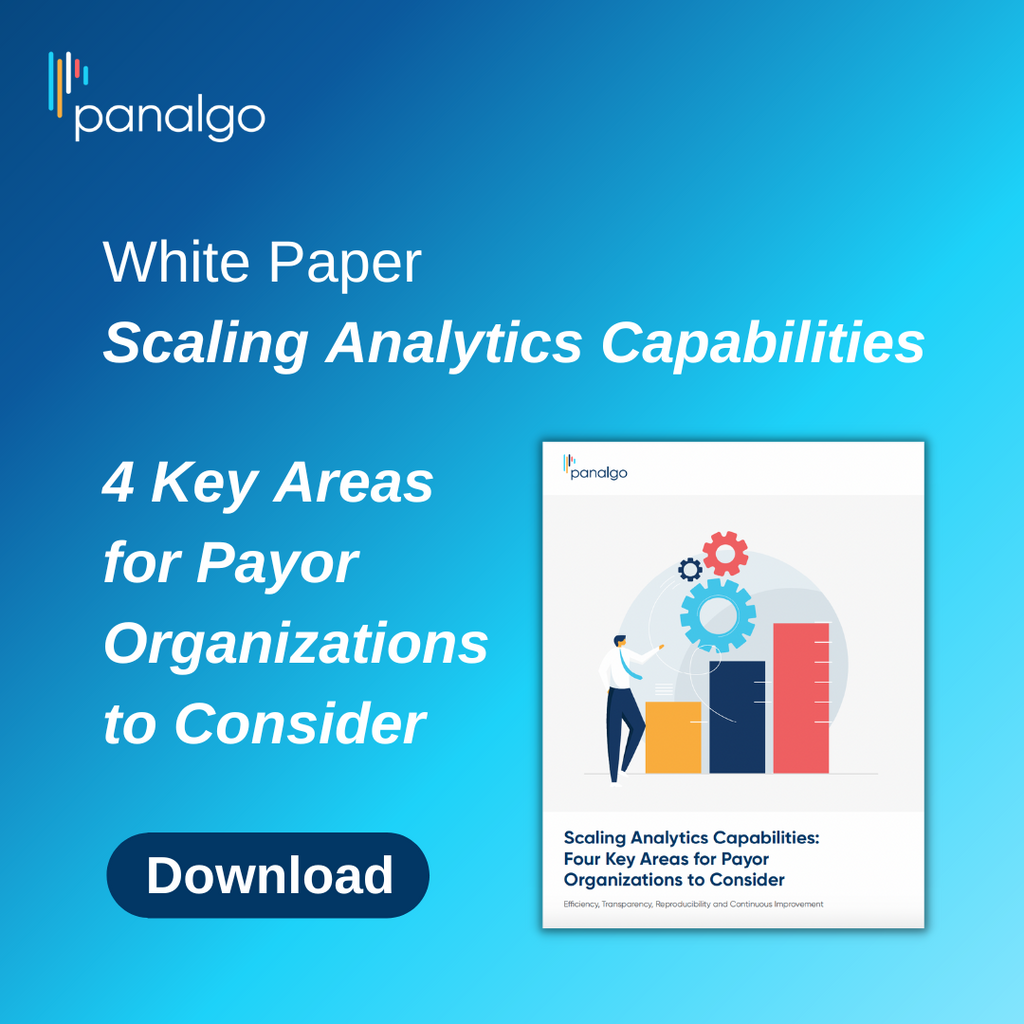Companies Hope to Find Clarity Around Drug Pricing, Tariffs, More in 2H 2025
-
Jul 03, 2025
Uncertainties around drug pricing policies, tariffs and changes at federal agencies are just some of the trends impacting pharma and biotech over the first half of the year. As we head into the second half of 2025, companies are continuing to show interest in direct-to-consumer approaches and certain types of precision medicine, although interest in cell and gene therapies may be waning a bit. AIS Health, a division of MMIT, spoke to a handful of industry experts about these trends and more. (Editor’s note: These comments have been edited for length and clarity.)
AIS Health: Could you please comment on pharma and biotech merger and acquisition (M&A) activity in the first half of 2025?
Hannah Deresiewicz, executive vice president and managing director at Precision AQ: From an IR [investor relations] perspective, M&A activity has been robust — in fact, per Raymond James research, if you include large licensing deals (upfront more than $150 million), pharma is on pace to have its most active year in recent history in terms of number of deals.
Most notably, acquisitions of post-POC [proof-of-concept]/pre-Phase III companies have experienced a meaningful uptick. This is understandable as pharma continues to be focused on assets that can drive growth in the back half of the decade and into next, and that are relatively derisked from a clinical and regulatory perspective.
Greg Gregory, Ph.D., executive vice president and partner at Precision AQ: From a pricing and market access lens, we’ve seen heightened caution in the first half of 2025 as companies try to assess how emerging policy, particularly the proposed Most-Favored Nation (MFN) pricing models and tariff dynamics, might affect future asset revenue and margins. This uncertainty has made it difficult to model long-term pricing potential, especially for assets where U.S. pricing power is a key part of the value story. Questions around whether MFN could bring down U.S. prices, or if European prices might rise in response (as some biopharma executives have suggested), have complicated forecasting assumptions in early deal discussions. What I’ve observed is that pricing ambiguity is directly impacting business development strategies, particularly when evaluating licensing deals or acquisitions involving pipeline-stage assets.
Jeffrey Stoll, KPMG U.S. life sciences strategy leader: The intersection of multiple major trends [has led to] a slow start to the pharma deal market in 2025. The economic, policy and geopolitical dynamics and continued high interest rates have made it challenging for executives to find comfort to execute on large deals. While we’ve seen smaller deals materialize, they are often structured deals to help companies minimize risk. The stock market volatility earlier in the year also created valuation uncertainty, but as 2025 progresses and if we see continued improvement of the economic certainty, we could see the rate of deals completed improve.
Heading into 2025, we knew that large pharmaceutical companies both had significant firepower to pursue M&A and the need to execute deals given the greater than $200 billion in revenue at risk due to LOEs [losses of exclusivity] by 2030. So we continue to see this industry as a loaded spring for M&A. The industry just needs the macroenvironment to settle down. No one wants to announce a deal at reasonable valuation one week, only to see the stock market nose dive 10% to 15% and immediately be underwater on a deal two weeks later. Again, we’re seeing signs of things improving; for example the IPO [initial public offering] market has started to pick up.
AIS Health: How do you think this may or may not change in the second half of the year?
Deresiewicz: From an IR perspective, we anticipate that the elevated level of M&A activity will persist. This expectation is driven not only by commentary from pharmaceutical companies but also by increasing interest among private firms seeking strategic exits. Several factors contribute to this trend:
- Ongoing challenges in the public markets are making strategic acquisitions more appealing than pursuing IPOs.
- Public investors are increasingly willing to assign early value to high-quality assets in large therapeutic areas, prompting pharma companies to act sooner — before these assets go public and valuations rise beyond reach.
- Shifts in the IPO landscape are encouraging companies to remain private longer, often long enough to achieve POC, placing them in an ideal position for acquisition by pharma.
Gregory: From the access strategy side, I don’t anticipate significant changes in behavior until there’s greater clarity on where key pricing policies will land. That said, if we start to see more detailed guidance from the administration on MFN, IRA [Inflation Reduction Act] enforcement or trade policy, that could give teams more confidence to move forward with forecasting and valuation models. In the meantime, most organizations I work with are focused on building flexible pricing scenarios so they can remain nimble if the policy environment stabilizes. From my vantage point, access-related uncertainty is still a key factor in decision-making.
Stoll: U.S. life sciences is still fighting for the regulatory clarity and balanced oversight needed to protect patients and drive innovation. At the same time, companies continue to grapple with federal policy shifts and tariff threats that hit the industry at its core. It’s a high stakes environment that requires robust scenario planning as well as places a premium on not just being informed but instead anticipating several steps ahead.
As sentiment with regard to clarity spanning regulatory, monetary and geopolitical direction strengthens, it is reasonable to assume a noticeable uptick in deal activity.
AIS Health: What were some of the most notable developments and/or trends within the industry in the first half of the year?
Gregory: The most notable trend has been navigating the uncertainty created by policy shifts and executive orders. Many of these directives were rolled out quickly, without the full operational or legislative details needed to interpret their business implications. As a result, much of the industry is operating in a strategic gray zone. Companies are awaiting more specificity — such as the potential 2028 pricing reform rollout — and monitoring proposed Medicaid/Medicare budget cuts being debated in the Senate. [The Senate passed the bill on July 1, and the House passed it July 3; as of AIS Health press time, it is awaiting President Donald Trump's signature.] These developments have prompted internal scenario planning but little definitive action so far.
Stoll: Direct-to-consumer has gained considerable interest across large pharmaceutical companies, particularly among those that have drugs that treat larger populations and/or don’t require intensive health care provider oversight. Given the continued pressure on drug prices, pharma is looking for ways to reduce their exposure to middlemen when they have products that fit within these types of strategies.
The other major trend that has continued from 2024 is a growing proportion of R&D [research and development] spend is focused on late-stage, Phase III clinical trials and a decline in the spend for early-stage programs. It’s clear big pharma and large biotechs recognize they need their late-stage portfolios to succeed so they can transition from mature products losing patents over the next five years. So more emphasis on spending on later-stage drugs is the focus.
Precision medicine continues to reshape not just the future of health care but also life sciences organizations as well. What’s interesting is where pharma is focusing has changed shape significantly over the last 24 months. The interest in gene therapies has slowed down significantly with less investment and deals happening in this space; however, the interest in biologics and cell therapies and other advanced modalities has continued to maintain similar levels of interest.
AIS Health: What do you think we may see in the second half of 2025 within pharma and biotech, and why?
Deresiewicz: Assuming stability in the world more broadly, I think we’ll see “more of the same” in the back-half of the year — i.e., continued M&A and interest in “creative” financing strategies vs. a return to the boom of crossover and IPO financings we saw several years ago.
Gregory: The second half of the year may bring more stability, at least in terms of clearer policy direction. While this won’t immediately shift 2025 market access tactics, it will help companies begin laying the groundwork for more confident planning in 2026 and 2027.
Stoll: There is a good chance with great economic certainty, and particularly if there are interest rate cuts in the second half of the year, that we see increased deal activity across pharma. That said, the current FTC [Federal Trade Commission] has maintained many of the policy stances and points of view that were started under Lina Khan and the Biden administration. So the pre-election hope that a less restrictive FTC would materialize under the new administration has not really happened. This is not to say the FTC will prevent pharma from conducting deals, but a similar level of scrutiny will likely continue on large and high-profile deals.
It will be interesting to see where legislation evolves on drug pricing. Most-Favored Nation drug pricing initiative seemed to catch the pharmaceutical industry off guard. Given the high cost of drugs to patients is not purely driven by manufacturers but often driven by PBMs, hospitals and other stakeholders, it will be interesting to see if legislators recognize the need to find the right balance of ensuring patients can afford drugs but also ensuring innovators are rewarded. There is a very real element related to drug pricing that allows the U.S. to be a global leader in drug innovation, but countries like China are rapidly growing their footprint as one of the top drug innovators of the world. Given the macroeconomic benefits of a healthy, innovative drug industry, which goes beyond drug manufacturers but includes a large set of service industries, hopefully we see policy strategies that recognize the need to maintain the U.S.’s position.
AIS Health: Could you please comment on what we’re seeing in pharma and biotech spurred by the new administration?
Gregory: This is the biggest insight in my opinion. Rather than accelerating decisions, the new administration’s policies have largely added uncertainty — particularly around drug pricing and reimbursement. One interesting shift we’ve seen in response is more pharma and biotech companies exploring alternative distribution and patient access channels. Instead of defaulting to traditional models, launching a drug and contracting with PBMs and health plans, some are investigating direct-to-patient approaches, taking cues from players like Eli Lilly and Co. and Novo Nordisk. These alternative models raise strategic questions: Can we reach enough patients without traditional channels? Could this improve adherence? Do we avoid high rebates and administrative burdens? It’s still early, but the fact that these questions are being asked signals a potential long-term shift in go-to-market thinking.
AIS Health: The FDA has undergone numerous changes, including to its personnel. What kind of an impact might those have on pharma and biotech companies?
Gregory: It’s too early to assess the full impact of personnel changes and structural shifts at the FDA. Many in the industry are taking a wait-and-see approach. The extent to which these changes affect regulatory review timelines or requirements will become clearer later this year. For now, companies are tracking signals but continuing to advance pipeline assets with the assumption that core FDA review principles remain intact, albeit with added scrutiny or potential shifts in communication.
AIS Health: Vaccines and cell and gene therapies are getting a lot of attention with respect to the new administration. What should companies with these agents, either available or in the pipeline, be doing moving forward?
Gregory: For companies in the vaccine space, the recent restructuring of the Advisory Committee on Immunization Practices (ACIP) has introduced some uncertainty into how future recommendations might be made and how that could affect downstream coverage and reimbursement decisions. While we don’t yet know how this will evolve, it’s important for manufacturers to prepare for the possibility that traditional policy signals (like inclusion in the [Centers for Disease Control and Prevention’s Morbidity and Mortality Weekly Report]) may shift or take longer to materialize.
From a market access standpoint, this means payers could look for alternative frameworks or internal processes to evaluate vaccines, especially when it comes to determining whether a product qualifies for $0 cost-sharing under preventive coverage rules [from the Affordable Care Act and IRA]. In a recent survey we conducted with U.S. payers, many indicated they may rely more heavily on real-world evidence, epidemiologic data and external expert committees if federal recommendations become less predictable.
The key takeaway is the need to proactively prepare robust evidence packages, not only for regulatory review but also for payer and public health decision-makers. In this environment, companies should anticipate broader questions around value, population impact and affordability much earlier in the commercialization timeline.
© 2025 MMIT












